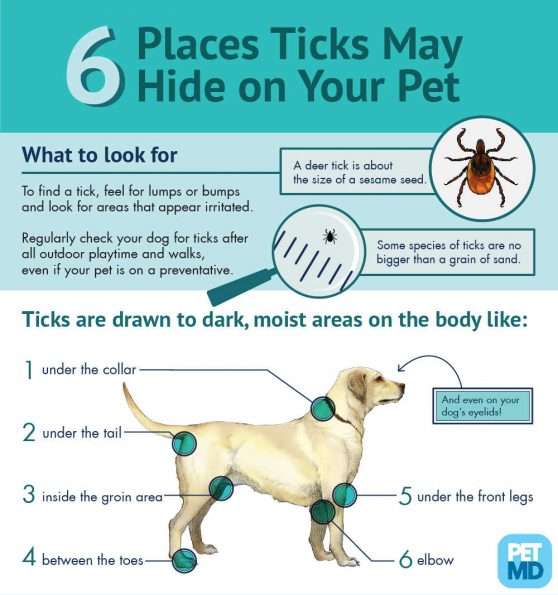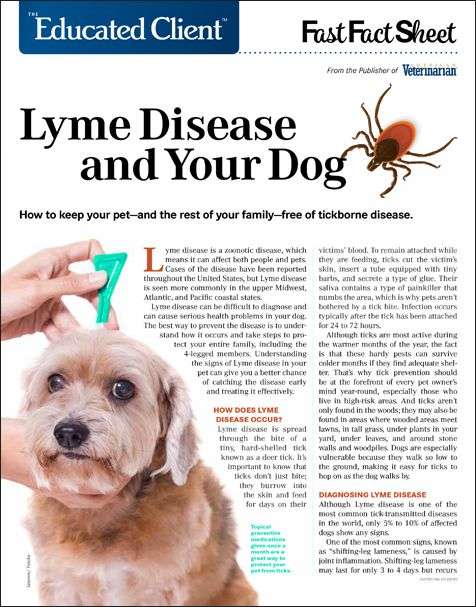Prevalence Of Lyme Disease In Dogs
In the United States, ~30,000 to 40,000 cases of human Lyme disease are reported to the Centers for Disease Control and Prevention each year,3 and reported cases are estimated to represent only 10% of the actual number.4 Most human Lyme disease cases are clustered in the New England, mid-Atlantic, and upper Midwest regions, where during 1993 to 2012, the number of high-risk counties increased by more than 300%.5 Because of their close association, humans and dogs share many of the same risk factors for encountering B. burgdorferiinfected ticks thus, dogs serve as excellent sentinels for human Lyme disease risk.6 This association is highlighted by comparing maps of Lyme disease cases for humans 3 with maps of B. burgdorferi seroprevalence among dogs .7
Figure 3. Reported cases of Lyme disease, United States, 2018.3
Figure 4. Seroprevalence of Borellia burgdorferi among dogs, United States, 2018. Of serologic diagnostic tests submitted in 2018, 5.64% were positive for B. burgdorferi.7 Photo Courtesy Companion Animal Parasite Council.
How Long Do Symptoms Take To Present Themselves
Like many medical conditions affecting dogs, Lyme disease isnt always apparent early on. In fact, it can take 2-5 months for your dog to begin showing symptoms of Lyme disease, and it may take even longer for some animals.
Another thing to keep in mind is that 5-10% of dogs who have Lyme disease dont actually show any signs of it.3 While you might notice behavioral changes and other symptoms that indicate your dog has Lyme disease, theres a good chance that you wont notice any symptoms at all. This is one of the reasons its so important to take your dog to the vet for a checkup every once in a while.
Lyme Disease Prevention In Dogs
One way to help prevent your dog from contracting Lyme disease is to keep your pet on a tick prevention medication year-round and speak to your vet about vaccinating your dog against Lyme.
Whenever your dog has been walking through areas where ticks may be hiding, it is a good idea to check your pet’s skin when you get home. It’s important to remove ticks as quickly as possible to reduce the risk of disease transmission.
That said, removing ticks isn’t as straightforward as you may think. Contact your vet for instruction on how to properly remove ticks from your dog. .
Remember – Lyme disease is much more severe in humans than it is in dogs! If you walk in areas with long grass or shrubs be sure to check your skin regularly for ticks. Contact your doctor for advice on removing ticks if you find one latched onto your skin. Lyme disease in humans can cause a host of painful chronic symptoms.
Note: The advice provided in this post is intended for informational purposes and does not constitute medical advice regarding pets. For an accurate diagnosis of your pet’s condition, please make an appointment with your vet.
Read Also: Full Recovery From Lyme Disease
How Can I Prevent My Dog From Getting Lyme Disease Or Other Tick
Recommendations on preventing ticks include these from AKCs Chief Veterinary Officer Dr. Jerry Klein:
- Inspect your dogs and yourself daily for ticks after walks through the woods or grassy settings. On dogs, look especially on the feet , on lips, around eyes, ears , near the anus, and under the tail.
- Remove ticks stat. The quicker you find them the less likely your dog will contract a secondary illness related to tick bites. Learn the proper method of tick removal. Invest in a pair of fine tweezers used for this purpose. If you are unable to do so, consult with a veterinarian.
- Ask your veterinarian to conduct a tick check at each exam. Theyll be able to find any you may have missed.
- Prevent ticks from jumping on your dog with one of the many veterinary-approved flea and tick preparations available on the market. Speak to your veterinarian to find the best and most appropriate product for your dog.
- Keep grass mowed as short as possible. Refrain from walking into grassy patches in endemic tick areas if you can.
- Get your dog vaccinated. Vaccination could prevent your dog from getting Lyme disease. They may not be appropriate for some dogs, so discuss with your vet.
How To Prevent Dogs From Having Ticks

While it is healthy to bring your dog out often to play, keeping them indoors most of the time is still the best way to avoid ticks. After a fun walk outside, thoroughly check them for any signs of ticks or itching as the longer a tick stays attached to your dog, the higher risk of developing a disease.
Ticks attach to grass, shrubs, etc. and latch on to nearby animals so it would be best to maintain a clean environment to avoid harboring ticks.
You May Like: How Do You Diagnose Lyme Disease
Lyme Disease In Dogs And How To Handle It
Author WDF Staff
04.03.2021.
Dog owners hate ticks. They are disgusting little parasites that can transmit many diseases to dogs, humans, and other animals. One of the most common diseases transmitted by ticks is Lyme disease. Most dog owners heard about it, but they are not really sure what it is and how it affects dogs. Here is what you should know about Lyme disease in dogs.
What Does Lyme Disease Actually Do To A Dog
The main ailment seen with Lyme disease in dogs is arthritis due to bacterial migration through the joints. Borrelia, the culprit behind Lyme disease, loves body tissues that are high in collagentherefore the body systems that have high amounts of collagenlike skin, joints, tendons, the heart, muscles and lymph nodestend to be most affected.
You May Like: Getting A Tick Tested For Lyme Disease
Other Diagnostic Tests For Lyme Disease
For dogs showing active signs of disease, joint cytology can be helpful. Tapping 3 or 4 joints is recommended. In dogs with active disease, nondegenerative neutrophils in joint fluid may be increased. Culturing joint fluid to look for B burgdorferi bacteria is difficult and takes a long time thus, culture is not recommended.1
Other diagnostic tests that can be performed on symptomatic dogs include blood chemistry analysis, which may indicate azotemia or markedly decreased albumin. A complete blood count might show mild to marked thrombocytopenia and, if the dog has nephritis, mild to moderate anemia and leukocytosis. For dogs with nephritis, a urinalysis may show isothenuria and proteinuria.1
The American College of Veterinary Internal Medicine Consensus group recommends routinely testing dogs in Lyme diseaseendemic areas for antibodies by using an in-house screening ELISA, evaluating dogs with a positive ELISA result for signs of joint pain/inflammation, and testing for proteinuria in the urine.3,4
Treatment For Lyme Disease In Dogs
The antibiotics most frequently used to treat Lyme disease in dogs are doxycycline and minocycline, at a dosage of 10 mg/kg PO q12h to q24h for 30 days. The recent American College of Veterinary Internal Medicine consensus on Lyme borreliosis in dogs offers several other antibiotic treatment options.17 In general, recovery prognosis for dogs that receive treatment for mild to moderate clinical Lyme disease is good. For dogs exhibiting clinical signs, including lameness, response to treatment is often demonstrated within the first few days. Because doxycycline and similar tetracycline antimicrobials are used to treat most tick-borne bacterial infections, clinical signs caused by co-infection of multiple tick-borne bacterial pathogens should respond as well. Successful infection control depends on client compliance . Although an empirical link between B. burgdorferi and glomerulonephritis has yet to be proven, the prognosis for dogs suspected of having Lyme nephritis is poorer, despite antibiotic intervention, especially if the nephritis is first observed during the latter stages of disease.
Read Also: Lyme Disease And Leg Cramps
How Do I Rid My Yard Of Ticks
Create a Tick-safe Zone to Reduce Blacklegged Ticks in the Yard Remove leaf litter. Clear tall grasses and brush around homes and at the edge of lawns. Place a 3-ft wide barrier of wood chips or gravel between lawns and wooded areas to restrict tick migration into recreational areas. Mow the lawn frequently.
Lyme Disease Symptoms In Dogs
Veterinarians in the Northeast know Lyme disease well. Its symptoms are very noticeable in dogs, says Beverly Cappel, DVM, in Chestnut Ridge, NY. They look like theyre coming down with the flu. They ache everywhere, walk hunched over as though stepping on eggshells, limp, have no appetite, and move in slow motion.
Their necks are stiff, their heads ache, they dont want to look up at the light, and they squint.
Don’t Miss: Unusual Symptoms Of Lyme Disease
Can I Catch Lyme Disease From My Dog
Dogs are not a direct source of infection for people. Lyme disease cant be transmitted from one pet to another, nor from pets to humans, except through tick bites. However, a carrier tick could come into your house on your dogs fur and get on you.
If your dog is diagnosed with Lyme disease, you and any other pets have probably been in the same outdoor environment and may also be at risk, so it is a good idea to consult with your physician and veterinarian to see whether you should test other pets or family members.
What To Expect At Home

Home care for dogs with Lyme disease is relatively straightforward. Doxycycline is usually given by mouth twice daily for at least 30 days. Improvement in the dogs symptoms should be noted within 24-48 hours. If the dogs condition fails to improve in 72 hours or worsens at any time, call your veterinarian.
Don’t Miss: Lyme Disease And Peripheral Neuropathy
How Is Lyme Disease In Dogs Diagnosed
Your veterinarian will assess your dogs symptoms, give them a physical, and typically also do bloodwork to determine their diagnosis. Bloodwork is necessary to confirm a Lyme diagnosis because many symptoms of Lyme disease can be mistaken for any number of other conditions.
Lyme disease in dogs is diagnosed through a blood test, Dr. Margit Muller, veterinarian and , tells Pumpkin. She further explains, This test detects the presence of antibodies to Borrelia burgdorferi, the bacteria strain that causes Lyme disease.
A combination of two blood tests is typically done: the C6 Test and the Quant C6 Test. The C6 Test detects antibodies, and is a preliminary blood test that can be run in most veterinary hospitals. If that test is positive, then a secondary test, the Quant C6 test, can be run to confirm infection and if treatment is needed. It takes a while for antibodies to show up in the blood after a dog is infected, so it is not recommended to test dogs earlier than four weeks after a tick bite.
What To Do If My Dog Has A Tick
Despite all your best efforts, sometimes a tick will still take hold of your pooch. If your dog has a tick, then you will want to remove it as soon as possible.
To remove, follow these steps:
Read Also: My Dog Tested Positive For Lyme Disease
Lyme Symptoms In Dogs
Its almost impossible to resolve a problem that you havent identified. So when it comes to your dog, how can you positively identify that there is an infection? What would you do need to look out for as a sign of infection by the disease-causing bacteria found in ticks? Find out in the following post:
Lyme is an infectious disease caused by bacteria called Borrelia which is most commonly carried by deer ticks. The deer tick becomes infected by feeding on infected animals such as mice, birds and deer. The infection is spread when an uninfected animal, such as your dog, is bitten by the infected tick
In dogs, the most common symptoms of Lyme disease include lameness due to inflamed joints, swollen joints and general malaise, reduced energy or discomfort. Depression and a lack of appetite are also common symptoms of Lyme disease in dogs. In some rare cases, Lyme disease symptoms can include difficulty breathing, fever and a sensitivity to touch. Read more at Hillcrest Animals
Causative Organism For Lyme Disease
B burgdorferi are spirochetes. These gram-negative, motile, cork-screw shaped, microaerophilic bacteria grow at body temperature in broth media.1 They are fastidious and do not grow well in standard growth media growth in a special broth medium can take 6 weeks or longer.2 Being microaerophilic, B burgdorferi prefer an environment with little oxygen, but they are not strictly anaerobic. These spirochetes cannot be viewed by standard microscopy methods visualization requires dark-field microscopy.2 Given all of these features,B burgdorferi cannot be cultured in a clinic setting.
Also Check: Where Can I Go To Get Tested For Lyme Disease
What Are The Clinical Signs Of Lyme Disease
Some people with Lyme disease develop a characteristic bull’s-eye rash at the site of the bite within three to thirty days. If this occurs, the disease can be easily diagnosed at an early stage.
However, signs of Lyme disease are more difficult to detect in animals than in people. The characteristic rash does not develop in dogs or cats. In fact, Lyme disease is practically unheard of in cats.
“Affected dogs have been described as if they were walking on eggshells.”
Many dogs affected with Lyme disease are taken to a veterinarian because they seem to be experiencing generalized pain and have stopped eating. Affected dogs have been described as if they were walking on eggshells. Often these pets have high fevers. Dogs may also begin limping. This painful lameness often appears suddenly and may shift from one leg to another. If untreated, it may eventually disappear, only to recur weeks or months later.
Some pets are infected with the Lyme disease organism for over a year before they finally show symptoms. By this time, the disease may be widespread throughout the body. Non-specific signs which may indicate that Lyme disease is affecting the kidneys include vomiting, lethargy, anorexia , and weight loss. The kidney form of the disease is less common, but often fatal.
Can Infection Be Spread Directly From One Dog To Another Dog Or From My Dog To My Family
Direct spread of Lyme disease from one dog to another dog has not been reported, even when infected and uninfected dogs have lived together for long periods.
Spread of Lyme disease from dogs to people has not been reported either, but people are equally at risk for Lyme disease if they are bitten by an infected tick.
Read Also: Can Lyme Disease Cause Memory Loss
Treating Dog Lyme Disease
If the diagnosis is Lyme disease, your dog will be treated as an outpatient unless their condition is unstable . Doxycycline is the most common antibiotic that is prescribed for Lyme disease, but other antibiotics are also effective.
Treatment usually takes at least 4 weeks, and longer courses may be necessary in some cases. Your veterinarian may also prescribe an anti-inflammatory if your dog is especially uncomfortable.
Unfortunately, antibiotic treatment does not always completely eliminate the infection from Borrelia burgdorferi bacteria. Symptoms may resolve but then return at a later date, and the development of kidney disease in the future is always a concern.
Administering the antibiotics properly to your dog reduces the likelihood of chronic consequences.
Improvement in sudden inflammation of the joints caused by Borrelia should be seen after 3-5 days of antibiotic treatment. If there is no improvement within 3-5 days, your veterinarian will want to reevaluate your dog.
How Long After A Tick Bite Will Dogs Get Sick

If an infected tick has been on your dogs body for 24-48 hours, they have the ability to spread Lyme disease to your pup.
Once the bacteria makes its way into your dogs bloodstream, the clinical signs typically develop anywhere from 2-5 months after infection.
Some dogs have been known to develop symptoms years after their tick bite, proving just how varied this disease can be.
Not only can it take months for symptoms of Lyme disease to develop in dogs, but the clinical signs can come and go if the disease is left untreated.
For example, a dogs limp may disappear suddenly, only to return months later with a vengeance.
Don’t Miss: Can Lyme Disease Cause Spinal Stenosis
Zoonotic Risk Of Lyme Disease
Dogs cannot directly transmit Lyme disease to people however, they can carry unfed infected ticks into a household where they might feed on humans. In addition, people are often in the same Lyme diseaseendemic areas as the dogs and can independently become infected.1 Increased incidence of dogs with Lyme disease can be used as an indicator for human risk in the same area.6
Remove The Tick Safely
The best way to remove a tick is with a pair of tweezers or a tick remover. Wear gloves and using sterile tweezers grab the tick near the head and pull straight back and remove. This may take patience and help from a friend to keep the dog calm and steady. There can be one or many ticks, and it can take time to ensure they are all removed.
Be sure to kill all all ticks after removing them. If you have a cut on your finger or hand, and you squish the tick and get blood on your open wound, there is a risk of transmission of Lyme disease to you. It’s best to wear gloves while removing the tick, and submerse it in rubbing alcohol to kill it instead of squishing it with your fingers.
Also Check: Can You Treat Lyme Disease Years Later